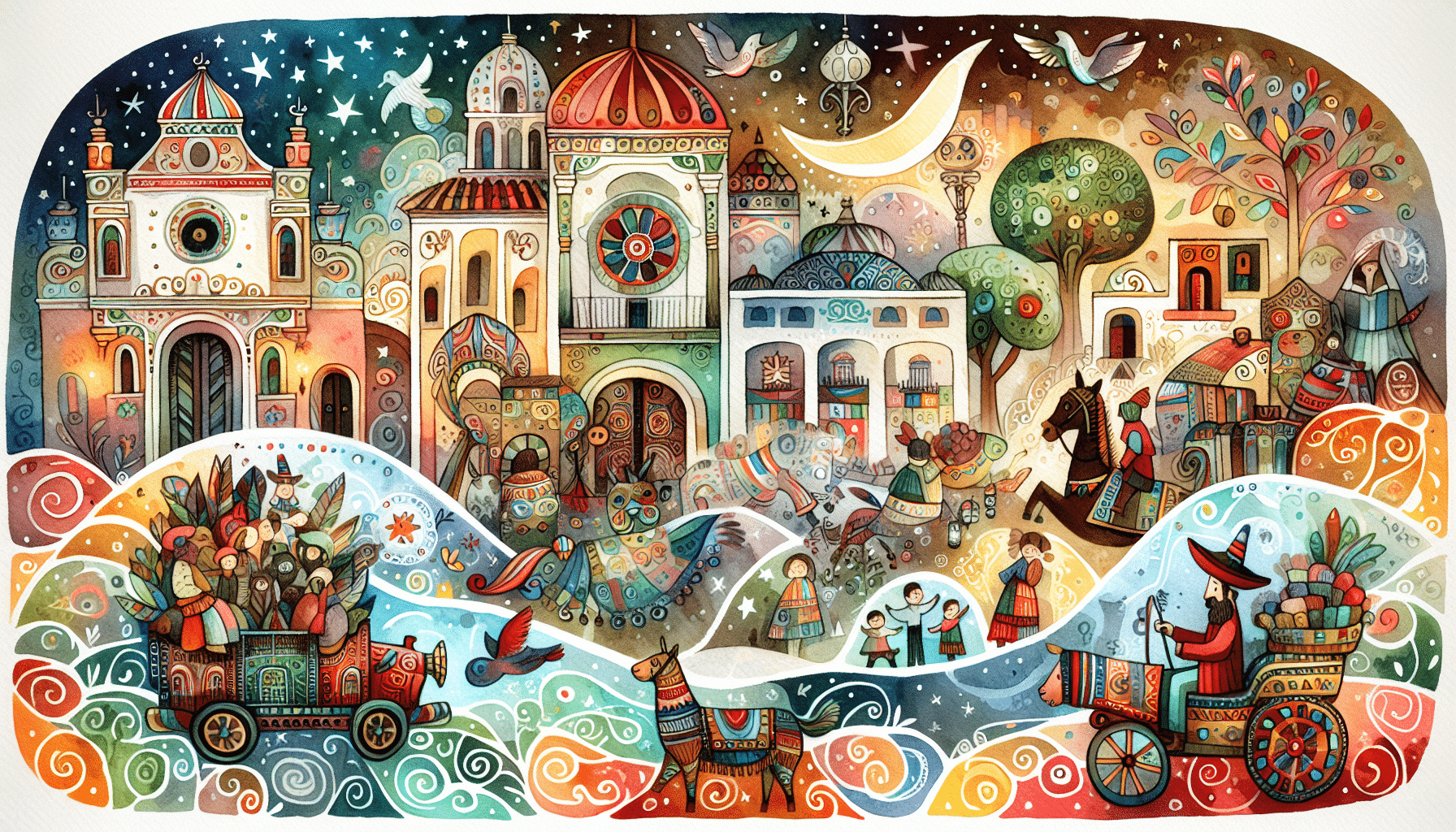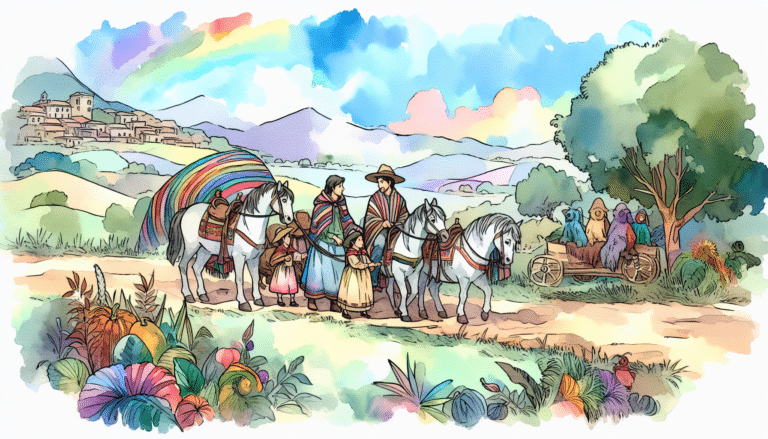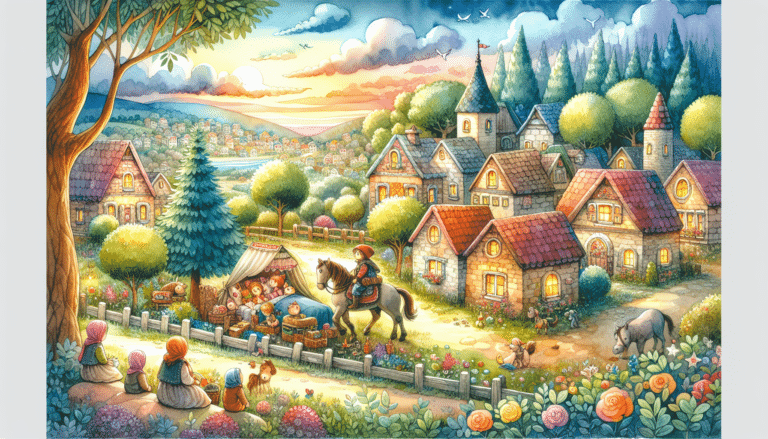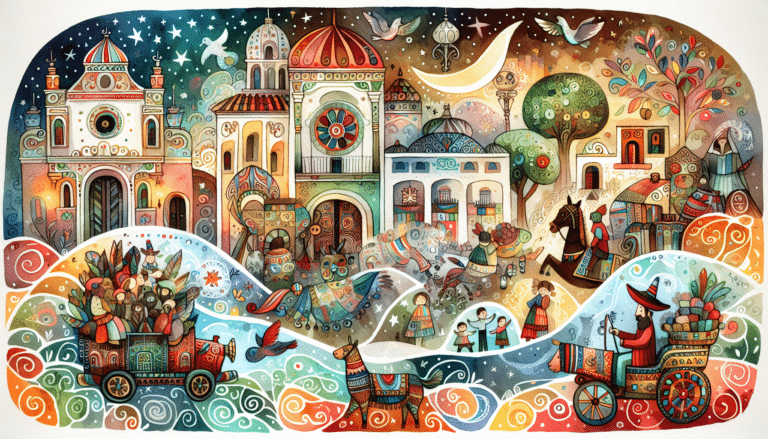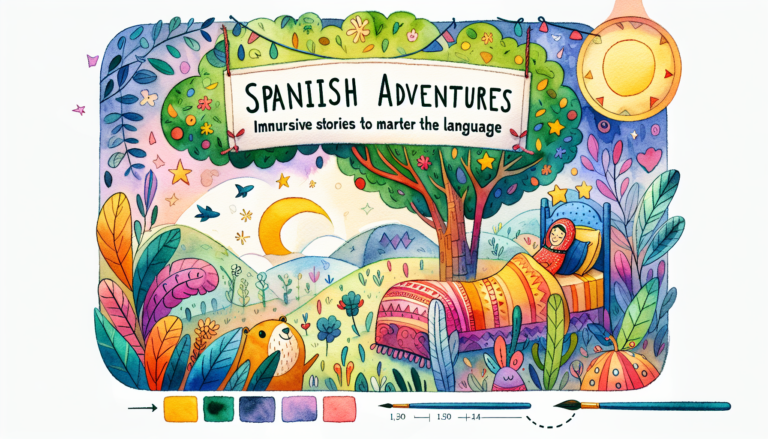Hispanic Heritage: Captivating Spanish Stories for Cultural Understanding(Version in Spanish and in English)
Patrimonio Hispano: Cautivadoras Historias Españolas para la Comprensión Cultural (Versión en español)
En el corazón de Sevilla, donde calles empedradas estrechas se cruzan y los naranjos esparcen su sutil fragancia en el aire, florece un cuento tan rico como la cultura española misma. Nuestra historia comienza en una humilde panadería regentada por un hombre robusto llamado Pedro, con arrugas de risa eternamente grabadas en las comisuras de sus ojos y una alegre jovialidad contagiosa.
Pedro no era simplemente un panadero, sino un contador de historias, encendiendo la imaginación con una sola palabra. Cada mañana, los niños locales se reunían en anticipación, sus ojos brillantes desbordando de curiosidad y entusiasmo por los cuentos de Pedro sobre la leyenda y la historia españolas que se tejían en el corazón de la colorida cultura de Sevilla.
Sin embargo, la belleza de estas interacciones no se limitaba solo a las historias de Pedro. Sin que él lo supiera, sus relatos, infundiendo la lengua y la cultura españolas, eran una bendición para un joven llamado Miguel. Miguel era extranjero en Sevilla, una cortina de incertidumbre le sombreaba continuamente debido a su limitado dominio del español y su desconocimiento de las normas culturales.
Miguel se sentía alienado, pero ahora, con las historias de Pedro, encontró un consuelo peculiar. La panadería de Pedro era un refugio seguro, un aula donde las palabras españolas bailaban alegremente y el latido de la cultura hispánica resonaba bellamente en cada cuento.
“Pedro”, comenzó Miguel un día, “¿Podrías ayudarme a entender la Fiesta de la Tomatina?” Los ojos de Pedro se iluminaron ante la oportunidad de compartir una querida tradición española, y así comenzó un cuento lleno de anticipación y risas gozosas, donde tomates rojos volaban a través del aire crujiente de Buñol – un espectáculo de caos organizado con el aire lleno de risas, camaradería y el aroma ácido de los tomates aplastados.
Los días perseguían a las noches, y luego semanas. Con cada cuento que cobraba vida dentro de la panadería, Miguel absorbía la singularidad de la cultura española, su comprensión del idioma profundizándose simultáneamente. Miguel se estaba transformando, adoptando una nueva cultura e idioma, y aprendiendo a amar el corazón de Sevilla.
Sin embargo, una nube de misterio persistía. Los cuentos de Pedro, aunque cautivadores, parecían luciérnagas esquivas, rozando diferentes festivales pero deteniéndose justo antes de explicar sus orígenes. Miguel anhelaba entender estas costumbres únicas en su totalidad.
Un día, impulsado por su curiosidad, Miguel preguntó, “Pedro, ¿por qué no nos cuentas la historia detrás de estas tradiciones? ¿Por qué comenzó el Encierro? ¿Quién pensó en lanzar tomates para la fiesta, y por qué?”
Cerrando los ojos, Pedro soltó una carcajada, “Miguel, estás listo para escuchar los cuentos dentro de estos cuentos. Mañana, comenzaremos con El Toro de la Vega. Prepárate para un viaje, mi joven amigo.” Y así se desplegó un nuevo capítulo en su interacción.
Al día siguiente, mientras el cuento de El Torro barría la pequeña panadería, Miguel escuchaba atentamente, cada palabra pintando una imagen vívida del épico tira y afloja entre el hombre y la bestia, lleno de emociones crudas y un entendimiento inesperado de valentía y respeto. Sus preguntas se desenrollaban como un hilo, llevando a cuentos dentro de cuentos, creando un tapiz sin costuras de la cultura e historia españolas, nutriendo las raíces del propio crecimiento de Miguel lejos de casa.
Miguel se sumergía más profundamente en la cultura española con cada día que pasaba, su comprensión del idioma y la cultura volviéndose más fuerte y completa. Su transformación había dado otro paso significativo.
Sin embargo, a medida que el ardor de los cuentos crecía, también lo hacía el misterio. A pesar de unir varias historias y eventos individuales, el origen de muchas tradiciones españolas seguía siendo un enigma. Hasta que un día, una invitada inesperada llegó a la panadería: una mujer de edad avanzada y elegante llamada Abuela Lucía.
Abuela Lucía, al escuchar a Pedro tejer un cuento sobre la Batalla de Mayo, lo interrumpió a mitad de la narración. Con los ojos brillando de calidez y sabiduría, compartió los orígenes olvidados, llenando los vacíos del cuento, conectando hilos de historias en una melodía armoniosa. El cuento estaba completo, y la narración de Pedro era espiritual e históricamente completa.
Esto marcó el inicio de una nueva tradición dentro de la panadería. Pedro y Lucía colaboraron, exhibiendo la joya que es la cultura española en todo su esplendor. Ahora, acompañados por el ritmo de los conocimientos históricos de Lucía, los cuentos de Pedro se convirtieron en una mezcla iluminadora de narrativa cultural y aprendizaje lingüístico para todos los que escuchaban, proporcionando un mapa cautivador para entender el espíritu de las tradiciones españolas.
Miguel, rebosante de nuevas habilidades lingüísticas y aprendizaje cultural, se convirtió en parte de la sociedad española vibrante. Su viaje reflejaba la progresión de sus habilidades lingüísticas, intrincadamente ligadas a su comprensión del patrimonio español, pintando el cuadro de un joven inmerso gradualmente en un mundo diferente al suyo.
Al final, la panadería de Pedro ya no era solo un lugar acogedor impregnado del delicioso aroma de pasteles frescos; se erigió como un faro de amalgama cultural y aprendizaje, una institución de sorts que daba sabor a la profundidad y riqueza del idioma español y una enorme iluminación a una multitud de historias culturales.
Así, fueron en estos cuentos de panadero, profundamente arraigados en el patrimonio hispano, que el leitmotiv de la cultura española se sirvió no solo a Miguel, sino a todos aquellos que buscaban consuelo en forma de historias susurradas sobre el mostrador. La panadería de Pedro, viva con el intercambio de cuentos y lenguaje, celebraba la esencia del Patrimonio Hispano, cultivando la comprensión cultural de la manera más encantadora.
Reflections on the story «Hispanic Heritage: Captivating Spanish Stories for Cultural Understanding»
The tale of Pedro and his bakery emphasizes our responsibility to promote linguistic and cultural learning gently and creatively.
Our world grows closer together when we understand and appreciate the beautiful diversity of cultures and the unique richness of languages we share.
In the storytelling sessions at a bakery in Seville, encapsulated snippets of Hispanic life give voices to the fascinating players of Spanish lore and history.
It is a testament to the power of stories, not just to entertain, but to educate, to encourage, and to foster bonds of shared heritage and understanding.
Hispanic Heritage: Captivating Spanish Stories for Cultural Understanding (English version)
In the heart of Seville, where narrow cobblestone streets intersect and orange trees cast their subtle fragrance into the air, there blooms a tale as rich as the Spanish culture itself. Our story begins in a humble bakery run by a stout man named Pedro, with crinkles of laughter forever etched at the corners of his eyes and a hearty, infectious cheerfulness.
Pedro was not merely a baker but a story teller, igniting imaginations with a single word. Each morning, local children would gather in anticipation, their bright eyes gleaming with curiosity and enthusiasm for Pedro’s tales of Spanish lore and history that wove into the heart of Seville’s colorful culture.
The beauty of these interactions, however, was not confined to Pedro’s stories alone. Unknown to him, his tales, infusing Spanish language and culture, were a blessing to a young boy named Miguel. Miguel was foreign to Seville, a curtain of uncertainty continually shadowing him due to his limited grasp of Spanish and unfamiliarity with the cultural norms.
Miguel felt alienated, but now, with Pedro’s stories, he found a peculiar comfort. Pedro’s bakery was a safe haven, a classroom where Spanish words danced joyfully and the heartbeat of Hispanic culture was echoed beautifully in each tale.
«Pedro,» began Miguel one day, «Could you help me understand the Fiesta de la Tomatina?» Pedro’s eyes lit up at the opportunity to share a cherished Spanish tradition, and thus began a tale filled with anticipation and joyous laughter, where red tomatoes flew through the crisp air of Bunol – a spectacle of organized chaos with the air filled with laughter, camaraderie, and the tangy scent of squashed tomatoes.
Days chased nights, and then weeks. With every tale that came alive inside the bakery, Miguel soaked in the uniqueness of Spanish culture, his understanding of the language deepening simultaneously. Miguel was transforming, adopting a new culture and language, and learning to love the heart of Seville.
Yet, a cloud of mystery lingered. Pedro’s tales, while captivating, seemed like elusive fireflies, touching upon different festivals but stopping just shy of explaining their origins. Miguel yearned to understand these unique customs in their entirety.
One day, pushed by his curiosity, Miguel asked, «Pedro, why don’t you tell us the story behind these traditions? Why did the Bull Run start? Who thought to throw tomatoes for the fiesta, and why?»
Closing his eyes, Pedro chortled, «Miguel, you are ready to hear tales within these tales. Tomorrow, we shall begin with El Toro de la Vega. Prepare yourself for a journey, my young friend.» And so unfolded a new chapter in their interaction.
The next day, as the tale of El Torro swept across the tiny bakery, Miguel listened intently, each word painting a vivid image of the epic tug-of-war between man and beast, filled with raw emotions and an unexpected understanding of bravery and respect. His questions unraveled like yarn, leading to tales within tales, creating a seamless tapestry of Spanish culture and history, nourishing the roots of Miguel’s own upbringing far from home.
Miguel delved deeper into Spanish culture with each passing day, his comprehension of the language and culture becoming stronger and well-rounded. His transformation had taken another significant step.
However, as the ardor of the tales grew, so did the mystery. Despite piecing together several individuals’ stories-events, the origin of many Spanish traditions remained a puzzle. Until one day, an unexpected guest arrived in the bakery—a gracefully aging woman named Abuela Lucia.
Abuela Lucia, hearing Pedro spin a tale about the Battle of May, stopped him mid-narration. Her eyes glinting with warmth and wisdom, she shared the forgotten origins, filling in the gaps of the tale, connecting strings of stories together in a harmonious melody. The tale was whole, and Pedro’s narration was spiritually and historically complete.
This marked the start of a new tradition inside the bakery. Pedro and Lucia collaborated, displaying the gem that is Spanish culture in all its glory. Now accompanied by the rhythm Lucia’s historical insights, Pedro’s stories became an enlightening mix of cultural narrative and linguistic learning for all who listened, providing a captivating roadmap to understanding the spirit of Spanish traditions.
Miguel, brimming with new linguistic skills and cultural learning, became a part of the ever-vibrant Spanish society. His journey mirrored the progression of his language abilities, tied intricately with his understanding of Spanish heritage, painting the picture of a young boy steadily immersing himself in a world different from his own.
In the end, Pedro’s bakery was no longer just a cozy spot lingering with the delightful smell of fresh pastries; it stood as a beacon of cultural amalgamation and learning, an institution of sorts that gave flavor to the Spanish language’s depth and richness and massive illumination to a multitude of cultural histories.
Thus, it was in these baker’s tales, deeply rooted in Hispanic heritage, that the motif of Spanish culture was served not just to Miguel but to everyone who sought comfort in the form of stories whispered over the counter. Pedro’s bakery, alive with storytelling and linguistic exchange, celebrated the essence of Hispanic Heritage, cultivating cultural understanding in the most enchanting way.
Abraham Storyteller (Abraham Cuentacuentos)

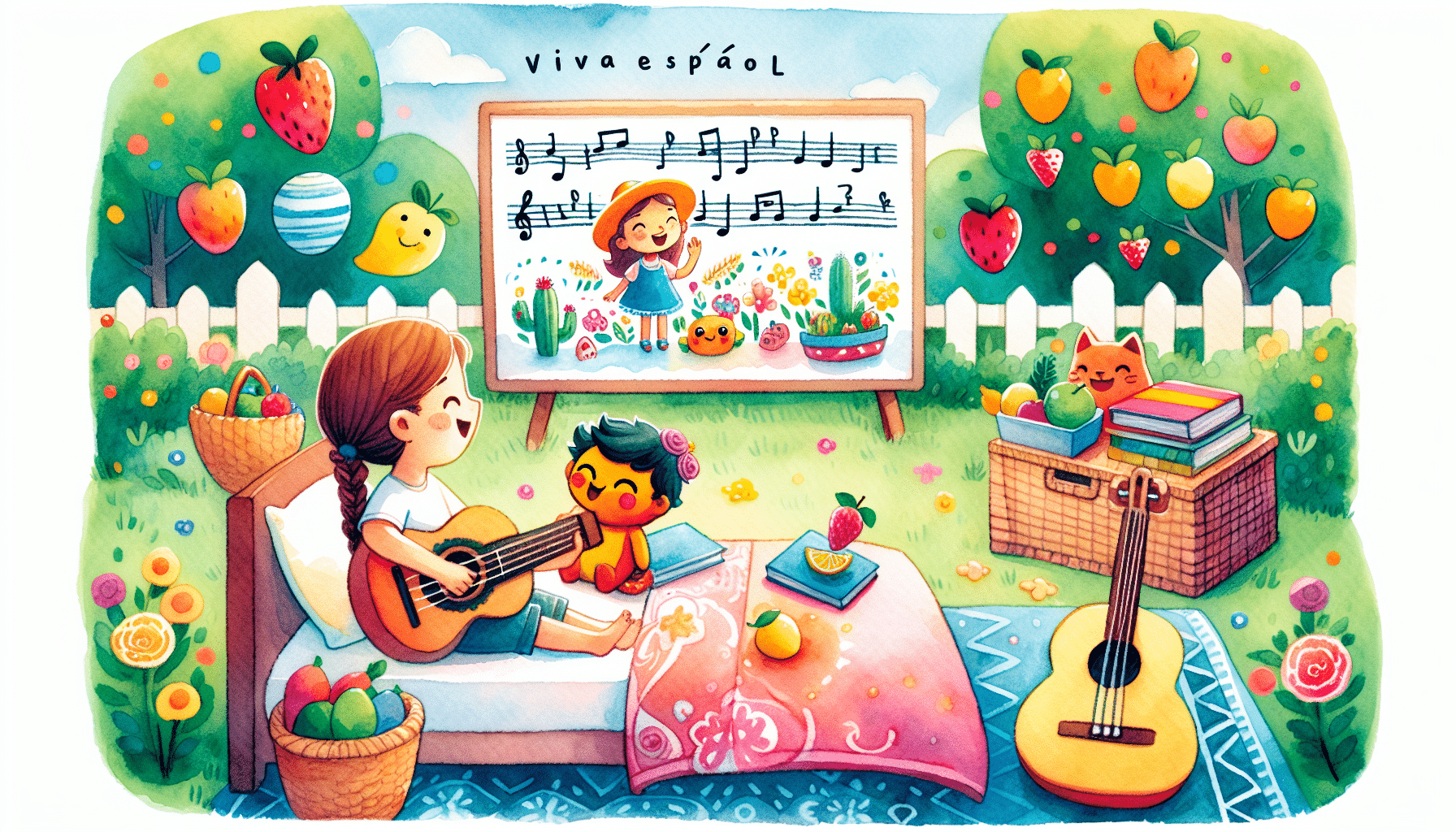
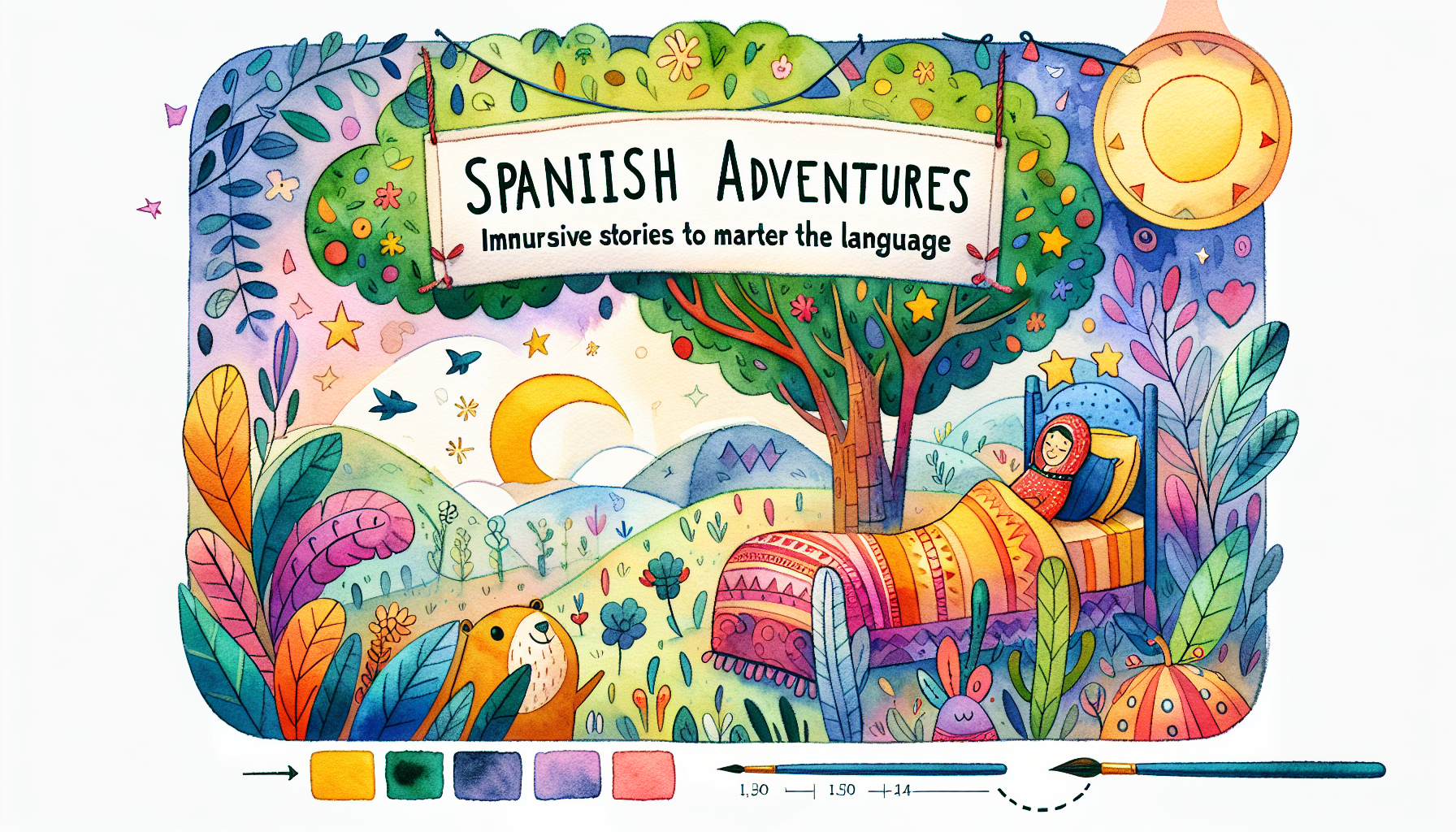 Spanish Adventures: Immersive Stories to Master the Language (Version in Spanish and in English)
Spanish Adventures: Immersive Stories to Master the Language (Version in Spanish and in English)